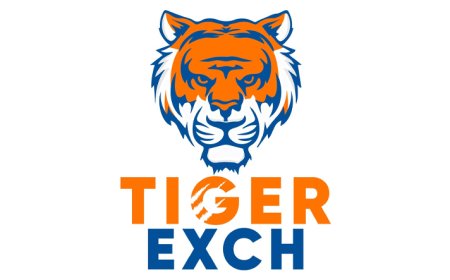Why Does the USD Exchange Rate Fluctuate? | Beginner’s Forex Guide
Curious why the USD rises or falls? This beginner-friendly guide explains what causes U.S. dollar exchange rate fluctuations in simple terms.

The U.S. dollar (USD) plays a central role in global finance and trade. As the worlds primary reserve currency, changes in the USD exchange rate can impact everything from international transactions to domestic prices. But why does the USD exchange rate fluctuate, and what causes these changes? Whether you're a beginner in forex trading, an international investor, or just someone curious about currency movements, this guide offers an easy-to-understand breakdown of the main factors influencing the USDs value. Lets explore what drives the fluctuations in the USD exchange rate and why it matters.
What Is an Exchange Rate and How It Works
An exchange rate is the price of one currency in terms of another. For instance, if 1 USD equals 0.90 euros, thats the exchange rate between the U.S. dollar and the euro. This rate constantly changes based on market forces, primarily supply and demand. In the United States, exchange rates are determined by a floating system. This means the USDs value is not fixed but fluctuates depending on global financial conditions, investor behavior, and government monetary policy.
Why Does the USD Exchange Rate Fluctuate? Key Factors Explained
Lets break down the most important reasons behind the frequent shifts in the U.S. dollars exchange rate.
Interest Rates and Federal Reserve Policy
One of the biggest influencers of USD value is the interest rate policy set by the Federal Reserve (Fed). Higher interest rates in the U.S. attract foreign capital, increasing demand for the dollar. When demand rises, the USD exchange rate typically goes up. Conversely, lower interest rates can weaken the dollar because investors may move their money to countries offering better returns.
Inflation and Price Stability
Another major reason why the USD exchange rate fluctuates is inflation. When inflation rises sharply in the U.S., the dollar loses purchasing power, causing its exchange rate to decline. On the other hand, low and stable inflation supports a stronger dollar. Inflation reports such as the Consumer Price Index (CPI) are closely watched by forex traders to predict currency movements.
U.S. Economic Growth and Performance
A strong and growing U.S. economy strengthens the dollar. High GDP growth, low unemployment, and strong consumer spending are all signals that attract investors and boost the USD. When economic indicators reflect stability, the dollar often appreciates.
Global Events and Political Uncertainty
The U.S. dollar is viewed as a safe-haven currency during uncertain times. Events like wars, pandemics, and geopolitical tensions tend to increase demand for the dollar, causing its exchange rate to rise. This is one reason the USD gained strength during the 2020 global crisis. However, political instability within the U.S.such as debt ceiling debates or government shutdownscan have the opposite effect and weaken the dollar.
Trade Balance and Current Account
The trade balance is the difference between exports and imports. A large trade deficit (importing more than exporting) can cause downward pressure on the USD because more dollars are leaving the country. However, strong U.S. exports can boost demand for the dollar and strengthen its exchange rate.
Market Speculation and Trader Sentiment
Currency markets are highly sensitive to expectations. If traders believe the dollar will rise in the future, they may buy USD assets in advance. This speculative demand increases the currencys value in the short term. Large institutions, central banks, and retail traders all contribute to this speculative environment, further influencing how the USD exchange rate fluctuates daily.
Real Examples of USD Exchange Rate Movements
To better understand these concepts, lets look at real-world situations where the U.S. dollar fluctuated:
-
COVID-19 Pandemic (2020): Investors rushed into the dollar as a safe-haven asset, increasing its value sharply during the early stages of the crisis.
-
20222023 Fed Rate Hikes: The U.S. dollar strengthened as the Federal Reserve aggressively raised interest rates to control inflation.
-
U.S.-China Trade Tensions: Uncertainty around tariffs and trade policies led to short-term volatility in the dollars exchange rate.
These examples clearly show that both economic fundamentals and global sentiment drive USD fluctuations.
How Forex Traders React to USD Exchange Rate Changes
Forex traders closely monitor the USD due to its global dominance. They use both technical and fundamental analysis to track price movements and plan their trades.
-
Technical analysis involves charts, patterns, and indicators.
-
Fundamental analysis focuses on economic reports, interest rate announcements, and inflation trends.
For those starting in forex trading, it's important to use reliable platforms. Many beginners rely on theTop 10 Forex Brokers lists to choose safe, regulated brokers that offer access to USD currency pairs with competitive spreads and leverage.
How USD Exchange Rate Fluctuations Affect You
Even if you're not a trader or investor, fluctuations in the USD can still impact your daily life:
Travel and Tourism
When the USD is strong, Americans traveling abroad get more for their money. However, if the dollar weakens, international travel becomes more expensive.
Import and Export Businesses
Companies that import goods benefit from a stronger dollar, as it lowers the cost of foreign products. Exporters, however, may find that a stronger dollar makes U.S. goods less competitive overseas.
Investments in Foreign Markets
For U.S.-based investors with international holdings, changes in the USD exchange rate can either boost or shrink returns. A weakening dollar increases the value of foreign earnings once converted back to USD.
Can You Predict USD Exchange Rate Movements?
While its impossible to predict with complete accuracy, many traders use tools to forecast short-term and long-term trends:
-
Economic calendars help track key data releases
-
Trend analysis shows historical patterns
-
Market sentiment indicators provide insight into trader behavior
Still, it's important to understand that unexpected events can quickly change the market, making predictions difficult. Risk management is key when trading a volatile currency like the USD.
How to Stay Updated on USD Movements
To stay informed about why the USD exchange rate fluctuates, follow trusted financial tools and resources:
-
TradingView for charting and analysis
-
Forex Factory for real-time economic calendars
-
Investing.com for live data and market news
-
Federal Reserves Website for official rate decisions and commentary
By keeping up with these sources, youll better understand the trends and movements that affect the U.S. dollar.
Final Thoughts
So, why does the USD exchange rate fluctuate? It moves based on a complex mix of interest rates, inflation, economic growth, global events, and investor sentiment. These factors interact in real-time, creating the dynamic forex market we see today. Whether youre planning a trip, running a business, or exploring trading, understanding the causes behind USD fluctuations helps you make more informed financial choices.
Frequently Asked Questions
What makes the USD stronger or weaker?
The USD strengthens when U.S. interest rates are high and economic indicators are strong. It weakens when inflation rises or global confidence in the U.S. economy falls.
Why is the U.S. dollar considered a safe-haven currency?
The dollar is trusted worldwide because its backed by a stable government and strong economy. In times of crisis, investors buy dollars to protect their wealth.
How does inflation affect the USD exchange rate?
Higher inflation in the U.S. reduces the dollars purchasing power, making it less attractive to investors. This typically leads to a weaker exchange rate.
Can political decisions impact the value of the USD?
Yes. Decisions about spending, taxes, regulations, or trade can affect market sentiment and drive the USD higher or lower.
What role does the Federal Reserve play?
The Fed manages U.S. monetary policy. Its decisions on interest rates and money supply are major drivers of USD exchange rate changes

































